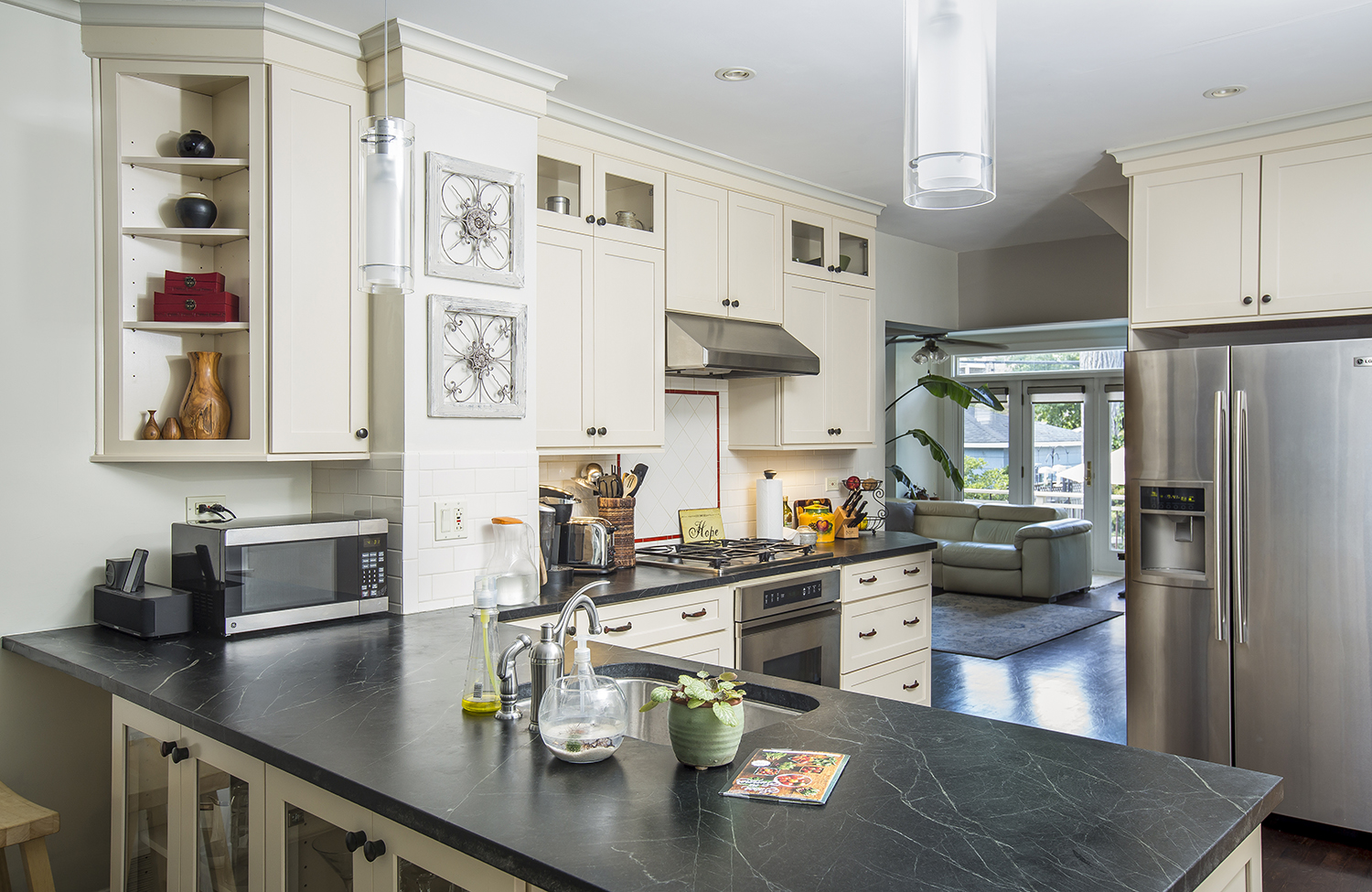When remodeling a kitchen, choosing a countertop can be the single most challenging decision. You want just the right balance of style and practicality. This single element sets the tone for your room, ties the design together, and takes the brunt of a busy kitchen’s work. And it’s easy to be overwhelmed by all the choices. But, hey, no pressure!

Let’s take a look at some of the most popular natural stone countertop materials. We’ll highlight the pros and cons, keeping in mind budget, ease of maintenance, and lifespan. A primary consideration when choosing a counter surface is to think about how you will use your kitchen. Kids’ spills and the mess from cooking will benefit from a stain-resistant surface, lots of food prep might call for a butcher block top, or perhaps you’d prefer a glossy granite to set the stage for entertaining. In this post, we’ll focus on natural stone countertops.
Granite
Granite counters have been a mainstay of kitchen design for decades and with good reason. Granite has an instantly recognizable look, and with so many colors and patterns to choose from, there are thousands of ways to add elegance and instant value to your home. Granite countertops are tough to beat for their durability, heat- and scratch-resistance, and relatively easy maintenance. All-in-all, a solid choice for busy kitchens where families and entertaining can lead to heavy use and potential spills. (Wipe up wine and oil spills quickly to avoid staining the stone.) Any high-impact whack can result in a gouge or chip. Reseal granite annually to protect the stone from staining; when properly maintained it will last for many years.
Soapstone
With its characteristic tones varying from dark greenish-black to warm charcoal grey, soapstone has a distinctive natural look that makes it a popular choice, especially with historic renovation, beautifully contrasting with white apron sinks and light-colored cabinetry. While not available in as varied a color palette as granite, soapstone’s veining and swirls of contrasting color add interest, and over time a natural patina will deepen the colors. As a countertop surface, soapstone is durable and can take the heat but may show wear from scratches and chipping over time. With proper treatment, soapstone will resist most spills and stains. As a natural stone, soapstone will be slightly more expensive than the average granite.
Marble
The gorgeous and distinctive creamy whites and grey swirls of a marble countertop make it a classic choice for a bright, clean look in a high-end kitchen. Marble is a pricier countertop choice—unique veining makes each piece one-of-a-kind—that adds value to the home and makes a stunning statement. This natural stone is high-maintenance, requiring extra care to keep it from scratching, staining, and showing its age over time.
Special note: Naturally occurring veining adds distinctive interest to the soapstone countertop above.
We continue our conversation on countertop options with this post on manufactured counters.
